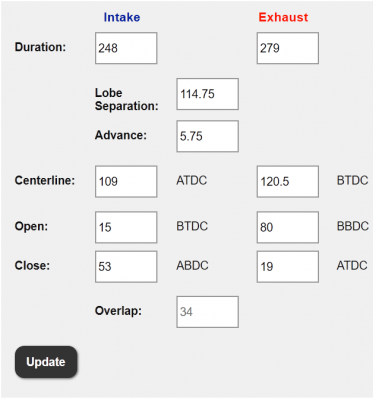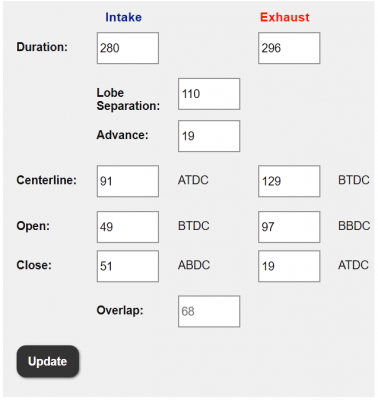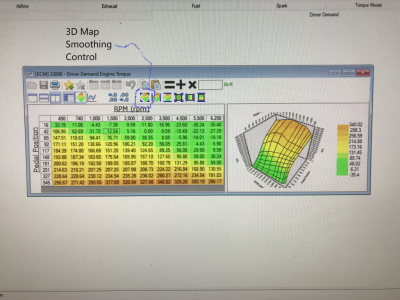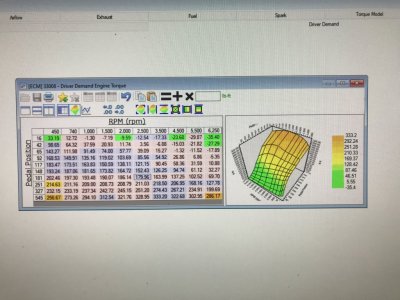GlassTop09
Senior Member
When the 2 maps are overlaid like these are (I can see a piece of the bottom map in the upper left corner) I can see how difficult it can be to distinguish between them w\o a good map legend to go off of.
Hi GriffX,Hi, I can get an used Ford Racing Hotrod cam, but I'm not sure because I drive a lot in city traffic.
And I have to pass emission inspection (they check CO level on 2000 rpm and lambda value of the monitor sensor)
My other mods are FR CAI, charge motion delete plates and 3.37 diff with Eaton trutrac.
What do you think about this cam?
Thanks!


Ah OK, my bad as I made assumption from your typing (and you have a 05 GT but didn't know the OEM trim package so assumed a Base instead of a Premium) that you still had OEM 3.31 gears......Oh boy, I made a typo, I have 3,73 gears installed.
Thanks a lot. So, the minimum requirement you see is the 3,73 gear, which I have. The US sniff test seems to be more demanding than the German, because they only look if the CO drops below a threshold which is higher than the ULEV. The required CO level in the EU back in 2005 was a lot higher than the US. It was EURO4, the ULEV2 can be compared to EURO6. So emission looks good.
The last hurdle is the bank account
Thanks for your time!

The method I've used to determine that is the fingernail test......if I run my fingernail across the used cam lobes\cam journals surface & it doesn't catch, it's good.Clutch is a good point. I had several tune iterations, because of erratic TB behavior from the CAI/CMDP tune when the car starts moving. And it cost me some clutch life. I have the 27" stock wheels.
I guess the marks from the roller followers are normal: View attachment 87413
Typing this from my IPhone thru a hotspot (Internet service has been down for approx 10 days…….CenturyLink strikes again…..have work ticket submitted for repairs) to follow up on car progress after finish of self tuning. Have put in 800+ mi since (across 12 full drive cycles) & car is performing very well & currently PCM has adjusted MPG up to 21.3………to date PCM hasn’t plateaued yet. Also have found a gas station in town (Smith’s Grocery Speedway) that has a better mix of E10 91 oct fuel than the COPC station I was using during tuning (STFT+LTFT on both banks hit 0%…….dead on stoich so far since using the E10 91 oct fuel from this Smith’s Grocery Speedway station w/ fuel stoich AFR of 14.08 that Ford uses for E10 fuel set in tune).MPG is the only item left to see where it ends up......but from initial observations it should top out within 20 to 22 MPG range when it is all fully learned\lined out PCM-wise after a few hundred miles of driving..


JC SSP,Buddy you should really get into the tuning businesses…

No GriffX,Does HPTuners use ECM Titanium?
Ok.......according to Ford's calibration coding.........Thanks! I one tried to modify my bin file from a Siemens SIM4LE ECU with ECM Titanium and the UI looks similar to your screenshots. (ECM was not able to read my bin file, btw)
I have a specific question to your driver demand map. Lets assume I drive on a highway with 3000rpm and lift the trottle. Then, I go down the throttle position 16 row. At 1000rpm it is neg, so no fuel will be injected, at 740 it is 11 Nm (?). What is in between, lets say 900 rpm?
